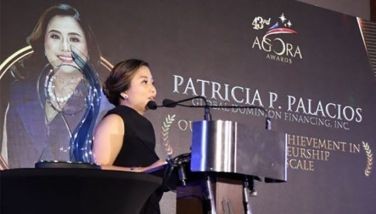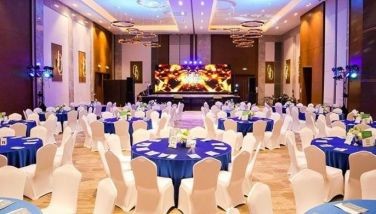Celebrating our freedom
Halfway through the year, the month of June signals many beginnings — the start of the rainy season, the beginning of classes, the new life of newly married couples. Next year, as in previous election years, June will be a new administration under a newly-elected President. More importantly, Filipinos must not forget the importance of June as the month when Filipinos declared their independence from Spain after more than four centuries of Hispanic rule.
Tomorrow, a holiday, the whole nation celebrates 111 years of Philippine Independence. Our people, especially the youth, must not forget the birth of the Philippine nation on June 12, 1898. After many months of struggle and resistance, an immense and jubilant crowd of Filipinos led by Emilio Aguinaldo, gathered in Kawit, Cavite, to proclaim their independence. This was when the Filipino Flag was first hoisted up. It was also during this historic moment that the public first heard the national anthem, majestically played by a marching band.
Few people know that our anthem, composed by Julian Felipe, had no lyrics at first, influenced by the Spanish anthem which, to this day, has no lyrics. It was only after the Filipinos saw the Americans singing their national anthem that Spanish lyrics were added the following year, culled from a poem entitled “Filipinas” by poet and soldier Jose Palma (Tierra adorada, hija del sol de Oriente…). The original title of our national anthem was Marcha Filipina Magdalo, later changed to Marcha Nacional Filipina. Because of its stirring music, the spirit of nationalism was even more enkindled among Filipinos to the point that Americans interpreted their stance as seditious. Hence, singing the anthem and display of the Filipino flag was banned. Five years after the Philippine Commonwealth was established in 1935, an English version was commissioned, the “Philippine Hymm”, written by educator, Senator Camilo Osias and an American named Mary A. Lane (Land of the morning, child of the son returning…). Such was the fervor and fire of nationalism expressed throughout various generations thereafter. During the Japanese occupation in World War II, the first Tagalog translation sung was “Diwa ng Bayan” (Lupang mapalad, Na mutya ng silangan…). After this, “O Sintang Lupa” (O sintang lupa, Perlas ng Silanganan…) by Balmaceda, Santos and Caballo was used from 1948 after the US declared our independence in 1946 up to 1956. Finally, under President Magsaysay, a version in Tagalog was made official and this was entitled “Lupang Hinirang” by Ildefonso Santos & Julian Balmaceda, 1940 (Bayang magiliw, perlas ng silanganan…. ). The various versions in three different languages attest to a strong spirit of nationalism and love for freedom among our race emblazoned in the pages of our history. No wonder there were such loud protest when the national anthem was sung avant-garde during a famous Filipino boxer’s recent matching event recently held in Las Vegas.
Not long after, following the victorious year in 1898, the United States aggressively pushed its rule over the new republic and was quick to smother the flames of new-found Filipino independence. It was then set on launching and expanding its imperial conquests in the attractive strongholds of the Pacific region, and the Philippines was a perfect strategic point to do so. In 1941, when the Philippines was occupied by the Japanese, General Aguinaldo would again lead the people to unite as one and cooperate wholeheartedly with the United States in order to save our democracy. After combined Filipino and American forces defeated the Japanese in 1946, former US President Harry Truman recognized our impendence, and declared this on July 4, the same day America celebrates its independence. But President Diosdado P. Macapagal officially changed the date of Philippine independence from July 4 to June 12 with a grand celebration in 1962, with Gen. Aguinaldo, then 93, as Guest of Honor. As his Cabinet member, this columnist had the privilege of recommending this change. I believe that countries are supposed to celebrate their independence on the day they declared it, and not as other governments, especially colonizers, recognized it.
These great deeds are more than enough reason to celebrate in June; but sadly for many, June 12 is just an ordinary holiday. We should think how our nation and its democracy have progressed from that time our brave heroes have first declared independence. This should make a good topic for our young students to reflect on, one way in which they and the future generations will retain in their memory the sacrifices made by our forefathers more than a century ago.
- Latest
- Trending

























